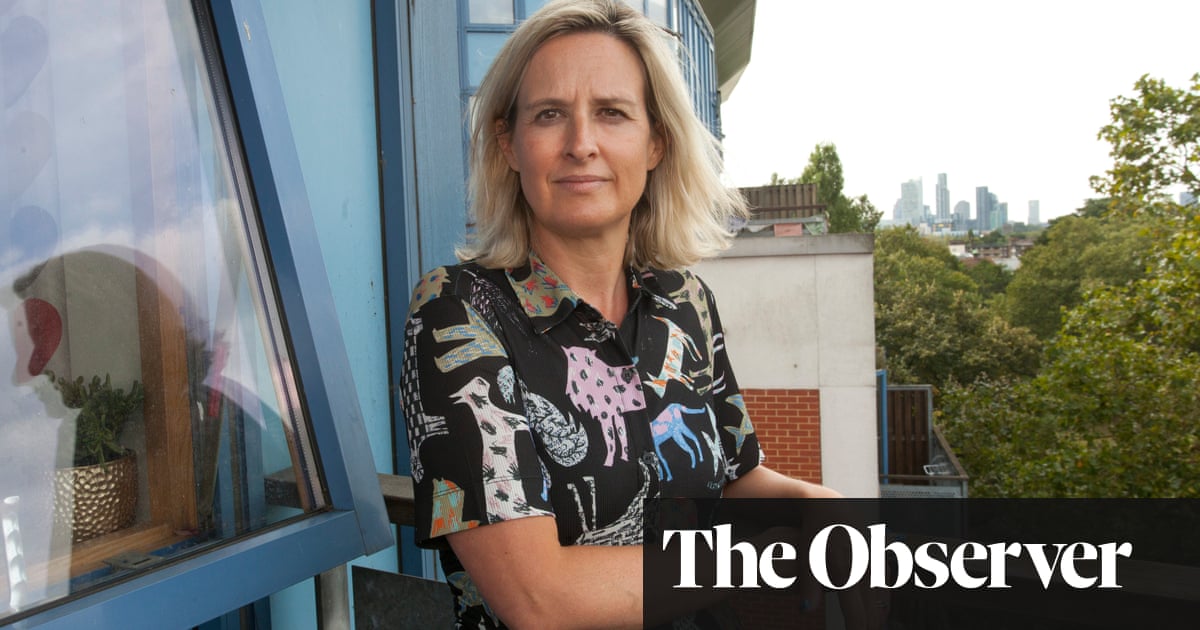Jobs
Seven years after Grenfell disaster, thousands live in fear of cladding fire

Grenfell was an avoidable tragedy, the inquiry’s counsel said on the final day of hearings. Yet with the report into the blaze that claimed 72 lives due this week, residents of other tower blocks fear that not enough has been done to prevent another catastrophe.
One of them is Gemma Lindfield. The 45-year-old barrister is still waiting for flammable cladding to be removed from her eight-storey apartment block in east London. It took three years before anyone even realised there was a problem. The following four years have been mired in indecision and wrangling about exactly who will pay to fix it.
In the meantime, Lindfield is unable to sell her flat, spending nearly £6,000 a year on higher insurance and service charges, and unwilling to move out and offer it for rent in case something happened.
“It’s a national scandal of the magnitude that no one understands unless you’re living it,” she said.
On Wednesday, the Grenfell inquiry will publish its second report into the fire that ripped through the 24-storey block in North Kensington on 14 June 2017, taking barely more than 20 minutes to engulf the tower. Sir Martin Moore-Bick, the inquiry chair, ruled in its first phase in 2019 that the fire spread so rapidly because the building had been wrapped in aluminium composite cladding filled with flammable plastic foam insulation.
Campaigners hope the inquiry will end what one survivor described as a “carousel of blame-pointing” by the people who designed, made and installed the cladding, and the local and national authorities responsible for regulating them.
The aftermath of the fire has seen attention focus on thousands of buildings with similarly combustible cladding and other fire risks. The government is tracking 4,630 buildings, and work has finished on 1,350, but the End Our Cladding Scandal campaign coalition believes as many as 11,000 buildings taller than 11m may be at risk.
After Grenfell, Lindfield and her neighbours, like many people living in apartment blocks, wanted to know if their building had flammable cladding. In December 2017 they were assured by the managing agent that the building’s cladding was non-combustible. “We got this letter. They said ‘all fine’, ‘nothing to worry about.’”
Three years later, when Lindfield was trying to sell her flat, prospective buyers wanted more reassurance and asked for an EWS1 form. These were introduced in December 2019 and are issued by assessors, usually surveyors, who examine the cladding and decide whether there is a fire risk.
When the report came back in December 2020, Lindfield was horrified. The surveyor had found that everything was not, in fact, all fine. Some of the wall cavities were filled with combustible insulation made by Kingspan. The external walls had panels with a combustible Styrofoam core. And there was timber decking on the balconies.
“What’s so scary about the whole thing is that until December 2020 we had a ‘stay put’ fire policy in place. Which is chilling,” Lindfield said. “They built something that’s fundamentally flawed.”
Yet the report did not lead to a rapid and thorough fix of the problem. Instead, leaseholders had to pay for a 24-hour firewatch and higher building insurance, heaping extra costs on them. Some found lenders would not offer new mortgage deals, leaving them at the mercy of rising interest rates.
Lindfield and other residents hoped that the government’s building safety fund would allow them to appoint builders to start remediation work in the summer of 2022, but their application was set aside after Countryside, the original developer, agreed to fund the necessary work.
It is one of 53 developers pushed by Michael Gove, the former housing secretary, to sign a “developer pledge” to fix fire risks on blocks they built, with the threat of being banned in effect from building new homes.
Yet work has still not started. The leaseholders argued that there were other problems with the building, including non-compliant firedoors, that Countryside was not obliged to fix as part of the pledge. During negotiations the firm asked that the remediation work should be considered a “full and final settlement”, which could prevent leaseholders from taking action on other defects. The request was dropped but Lindfield is unhappy.
“If these developers can’t build a property according to building regs at the time, how can I be sure that they’re going to remediate it in a way that’s safety compliant?” she said.
after newsletter promotion
A spokesperson for Vistry, which acquired Countryside in 2022,
said: “We understand the concern and frustration felt by leaseholders. Unfortunately, we have been unable to start remediation work … as we have been waiting for confirmation of agreement on the works required.”
She added that the company would pay for repairing any construction-related defects with internal doors and compartmentation.
It is understood that Vistry has assessed 95% of the buildings in its developer pledge portfolio and more than half have plans in place to start works within the next 12 months.
Last week’s fire at Spectrum House in Dagenham, which is still being investigated, has sparked fresh fears for Lindfield and others, since the building was undergoing work to remove non-compliant cladding. Health and Safety Executive investigators visited the site last Friday. The fire service is also carrying out an investigation into the fire – and has yet to determine whether and how the cladding was involved.
Giles Grover, co-leader of End Our Cladding Scandal, said cladding had become “a full-blown building safety crisis”. “The fire in Dagenham was Sir Keir Starmer’s warning – he must not wait for more people to die before his government does the right thing,” he said.
“Hundreds of thousands of people are still trapped in unsafe homes,” he said. “We expect the inquiry’s phase two report to hold key decision-makers to account – whether in government or industry – but it is also about the systems and structures that have been in place for decades.
“Successive governments deregulated, cut red tape and ignored multiple warnings, choosing instead to focus on the interests of business rather than ordinary people being safe in their own homes. In its quest to build 1.5 million homes, Labour must not repeat these mistakes.”








